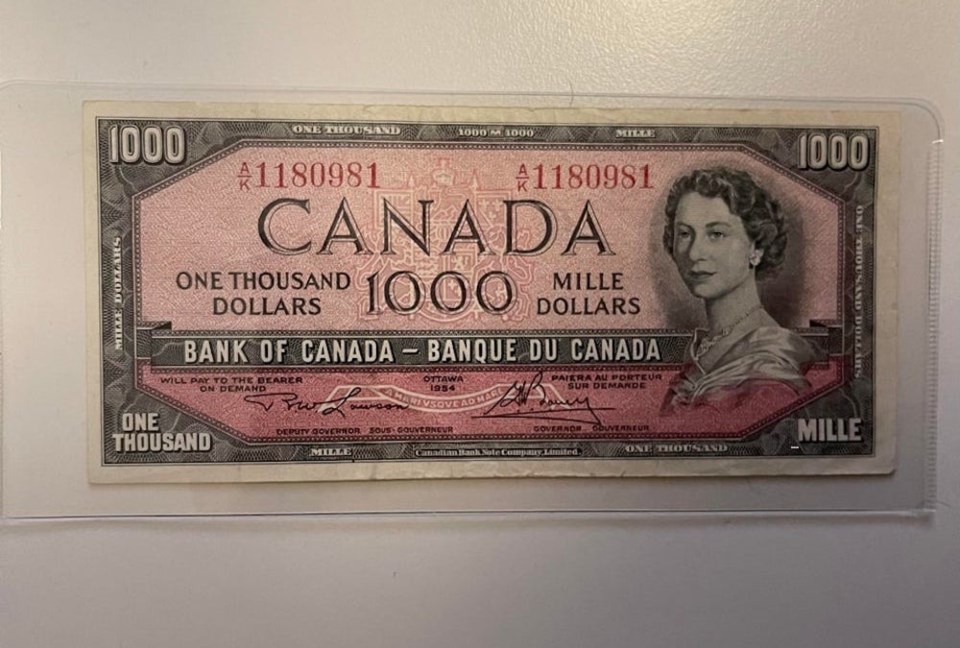While you might have a couple of $1 or $2 bills stashed in your abode, you might not have so many $500 bills.
What about a $1,000 bank note?
As of January 1, 2021, Bank of Canada spokesperson Amélie Ferron-Craig tells Vancouver Is Awesome that $1, $2, $25, $500 and $1,000 bills from each series issued by the Bank of Canada are no longer legal tender.
These banknotes have not been produced in decades, so the Bank of Canada says the decision to remove them from circulation has had little impact on most people.
- The $1 and the $2 notes stopped being issued in 1989 and 1996, respectively, and were replaced with coins.
- The $25 note was a commemorative note. Both it and the $500 note were discontinued shortly after they were issued in 1935.
- The $1,000 note stopped being issued in 2000.
Redditor Mickey_20 recently shared an image of a $1,000 bill on the platform. Ferron-Craig adds the bank note appears to be a $1,000 note from the 1954 series.
According to the Bank of Canada Museum, "The $1,000 note was printed by Canadian Bank Note Company Ltd. The back of the note shows the covered bridge in the village of L’Anse-Saint-Jean, Quebec, and, in the background, the Saguenay River fjord.
"The photo that the engraving was based on was taken by Max Sauer of Montréal."
No longer considered legal tender
The $1,000 denomination stopped being issued in 2000, and it is no longer considered legal tender. Essentially, you won't be able to spend them in a cash transaction.
This does not mean that the notes are worthless, however. The Bank of Canada says it will continue to honour them at face value. You can take them to your financial institution or send them to the Bank of Canada to redeem them. Or, you can keep it.
The Bank of Canada adds that some of the rarer notes, such as the $25 and $500, can be worth significantly more than face value.
"To find out if your bank note may have a different value to collectors, you may refer to a collector's catalogue or obtain an evaluation from two or three money dealers who cater to the collection market."



